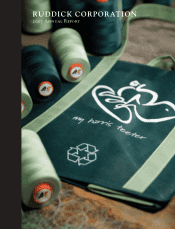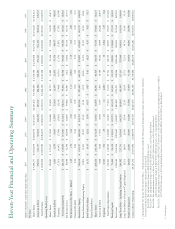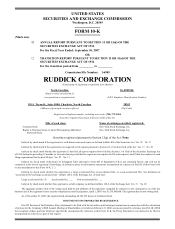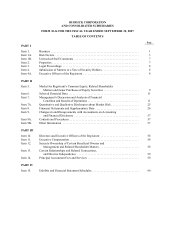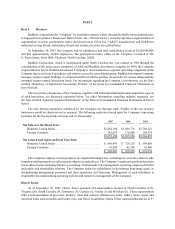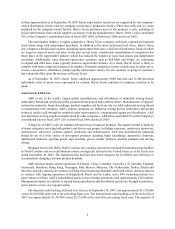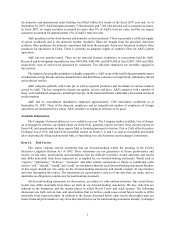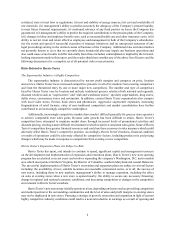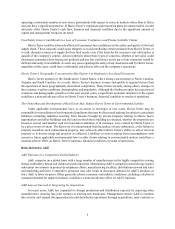Harris Teeter 2007 Annual Report Download - page 9
Download and view the complete annual report
Please find page 9 of the 2007 Harris Teeter annual report below. You can navigate through the pages in the report by either clicking on the pages listed below, or by using the keyword search tool below to find specific information within the annual report.5
operating a substantial number of new stores, particularly with respect to stores in markets where Harris Teeter
does not have a significant presence. If Harris Teeter’s expansion and renovation plans are unsuccessful, it could
adversely affect Harris Teeter’s cash flow, business and financial condition due to the significant amount of
capital and management resources invested.
Food Safety Issues Could Result in a Loss of Consumer Confidence and Product Liability Claims
Harris Teeter could be adversely affected if consumers lose confidence in the safety and quality of the food
supply chain. These concerns could cause shoppers to avoid purchasing certain products from Harris Teeter, or
to seek alternative sources of supply for their food needs, even if the basis for the concern is not valid and/or is
outside of the company’s control. Adverse publicity about these types of concerns, whether or not valid, could
discourage consumers from buying our products and any lost confidence on the part of our customers would be
difficult and costly to reestablish. As such, any issue regarding the safety of any food items sold by Harris Teeter,
regardless of the cause, could have a substantial and adverse effect on the company’s operations.
Harris Teeter’s Geographic Concentration May Expose it to Regional or Localized Downturns
Harris Teeter operates in the Southeastern United States, with a strong concentration in North Carolina,
Virginia and South Carolina. As a result, Harris Teeter’s business is more susceptible to regional factors than
the operations of more geographically diversified competitors. These factors include, among others, changes in
the economy, weather conditions, demographics and population. Although the Southeast region has experienced
economic and demographic growth over the past several years, a significant economic downturn in the region
could have a material adverse effect on Harris Teeter’s business, financial condition or results of operations.
The Ownership and Development of Real Estate May Subject Harris Teeter to Environmental Liability
Under applicable environmental laws, as an owner or developer of real estate, Harris Teeter may be
responsible for remediation of environmental conditions that may be discovered and may be subject to associated
liabilities (including liabilities resulting from lawsuits brought by private litigants) relating to Harris Teeter
supermarkets and other buildings and the land on which those building are situated, whether the properties are
leased or owned, and whether such environmental conditions, if in existence, were created by Harris Teeter or
by a prior owner or tenant. The discovery of contamination from hazardous or toxic substances, or the failure to
properly remediate such contaminated property, may adversely affect Harris Teeter’s ability to sell or rent real
property or to borrow using real property as collateral. Liabilities or costs resulting from noncompliance with
current or future applicable environmental laws or other claims relating to environmental matters could have a
material adverse effect on Harris Teeter’s business, financial condition or results of operations.
Risks Related to A&E
A&E Operates in a Competitive Global Industry
A&E competes on a global basis with a large number of manufacturers in the highly competitive sewing
thread, embroidery thread and technical textile industries. Maintaining A&E’s competitive position may require
substantial investments in product development efforts, manufacturing facilities, distribution network and sales
and marketing activities. Competitive pressures may also result in decreased demand for A&E’s products or
force A&E to lower its prices. Other generally adverse economic and industry conditions, including a decline in
consumer demand for apparel products, could have a material adverse effect on A&E’s business.
A&E may not Succeed at Integrating Its Acquisitions
In recent years, A&E has expanded its foreign production and distribution capacity by acquiring other
manufacturers, entering into joint ventures or starting new businesses. Management expects A&E to continue
this activity and expand foreign production and distribution operations through acquisitions, joint ventures or

